バルト諸国占領
出典: フリー百科事典『ウィキペディア(Wikipedia)』 (2024/04/19 09:17 UTC 版)

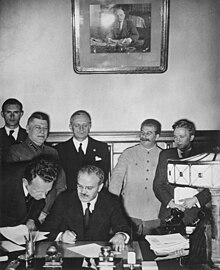
概要
1939年9月、第二次世界大戦が開始された時にはバルト三国の運命は1939年8月の独ソ不可侵条約とその秘密議定書によって既に定まっていた[7]。
バルト三国の第二次世界大戦時の被害はヨーロッパにおける最大のものの1つである。人口の損失はエストニアの25%、ラトビアの30%、リトアニアの15%と見積もられている。戦争と占領において死亡した犠牲者数はエストニアで9万人、ラトビアで18万人およびリトアニアの25万人と推定される。これには1941年のソビエトによる追放、ドイツによる追放、およびホロコーストの犠牲者を含んでいる[8]。
ペレストロイカ期の1989年に始まったソビエト史の再評価で、ソ連は自国とドイツとの間で結ばれた1939年の秘密議定書がバルト三国への侵攻と占領を導いたとして自己批判している[9]。
バルト三国の独立を求めた闘争は1991年に結実し、各国の独立が回復してソ連から離脱した後は、その半年後のソ連の最終的な分裂を加速した。ロシア軍は、1993年8月にバルト三国からの撤退を開始した(初めはリトアニアから)。最後のロシア軍部隊は1994年8月にバルト諸国から撤退している[10]。ロシア政府は1998年8月まで、スクルンダ-1のレーダー基地を借りる契約を結んでいた[11]。最後のロシア軍部隊は1999年10月にスクルンダ-1から撤退している[12]。
1939年までの歴史
以前はロシア帝国の領土であったバルト海のフィンランド、エストニア、ラトビアおよびリトアニアの4カ国は第一次世界大戦後、エストニア、ラトビアおよびリトアニアの独立戦争を経て1920年までに各国の国境を確定した(参照:タルトゥ条約、ラトビア・ソビエト・リガ平和条約、ソビエト・リトアニア平和条約 (en))。 1924年、リトアニア、ラトビアおよびエストニアは、最終的な侵略者に対する相互防衛協定に調印[13]。10年後には、スターリン指導下のソ連は、1944年までこれらのバルト三国を攻撃しないことを誓約した[14]。
ソビエトによる1939年の最後通告
独ソ不可侵条約
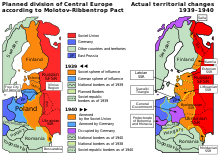
1939年8月24日早朝、ソビエト連邦とドイツは期間10年の独ソ不可侵条約に調印した。この条約には1945年のドイツ敗戦後になってから初めて明かされる秘密議定書が含まれていた。その条項によるとヨーロッパの北部と東部の国々がドイツとソビエトの「勢力圏」に分割されていた[15]。北部ではフィンランド、エストニア、およびラトビアはソビエトの勢力圏に割り当てられていた[15]。ポーランドについてはナレフ川、ヴィスワ川、サン川の東側地域はソビエト、西側地域はドイツが占領することになっていた[15]。東プロイセンに隣接するリトアニアは当初ドイツの勢力圏となる予定だったが、1939年9月に合意された次の秘密議定書(ドイツ・ソビエト境界友好条約)ではリトアニアの大部分はソ連に割り当てられた[16][17]。秘密条項により、リトアニアは戦間期にはポーランドに支配されていた、かつての首都ヴィリニュスを取り戻した。
第二次世界大戦の開始
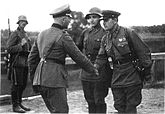
- 1939年9月1日、ドイツがポーランド侵攻(第二次世界大戦始まり)
- 1939年9月3日、イギリス、フランス、オーストラリア、ニュージーランドがドイツに対して宣戦布告(まやかし戦争)
- 1939年9月4日、フランス・ポーランド軍事同盟更新
- 1939年9月10日、カナダがドイツに対して宣戦布告
- 1939年9月14日、ポーランド潜水艦オジェウがエストニアのタリンに入港
- 1939年9月17日、ソ連がポーランド侵攻。イギリス、フランスは宣戦布告せず
- 1939年9月18日、オジェウ事件が起こる: ポーランド潜水艦オジェウがタリンにおける拘束状態から脱出し、最終的にイギリスに向かう。このことからソ連とドイツがエストニアの中立性を疑う。
エストニア、ラトビア、リトアニアへの最後通告
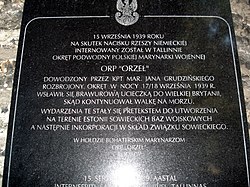
1939年9月24日、赤軍の海軍軍艦がエストニアの港沖に現れ、ソ連軍爆撃機がタリンとその近郊上空で威嚇飛行を始めた[18]。9月25日、ソ連はバルト三国全ての空域に入り、大規模な情報収集活動を実施。ソ連政府はバルト三国がその領土にソ連の軍事基地建設と部隊の駐留を認めることを要求した[19]。
1939年9月28日、エストニア政府は最後通告を受諾し、関連する協定に調印した。10月5日にラトビアが続き、リトアニアは10月10日に調印した。その協定はヨーロッパの戦争の期間、ソ連がバルト三国の領土にソ連の軍事基地を建設すること[19]と1939年10月からエストニアに2万5千人、ラトビアに3万人、リトアニアに2万人の赤軍駐留を認めるものだった。
1939年前半、レニングラード軍管区は既にバルト三国に向けて赤軍の約10%に当る17師団の配備を終えていた。間もなく動員が行われた。1939年9月14日、第8軍がプスコフに派遣され、動員された第7軍はレニングラード軍管区の指揮下に入った。侵攻準備はここまでに完成に近づいていた。9月26日、レニングラード軍管区には「エストニア・ラトビア国境へ部隊の集中の開始と9月29日の作戦終了」が命じられる。その命令では「攻撃開始の時刻については別の命令が発せられる」ことと伝えられる[20]。1939年10月初めまでにソビエトはエストニア・ラトビア国境に全部で以下のような準備を終えていた。
- 兵力 437,325
- 砲撃火器 3,635
- 戦車 3,052
- 装甲車 421
- 車両 21,919[21]
フィンランド侵攻
ソ連はフィンランドにも同様の協定への調印を要求したがフィンランドは拒否し[22]、1939年11月30日、ソ連はフィンランドに侵攻し、冬戦争が勃発した。この侵攻は国際連盟によって違法なものと判断され、12月14日にソ連を国際連盟から除名する[23]。この戦争は1940年3月13日に終り、フィンランドとソ連はモスクワ平和条約に調印した。フィンランドは首都ヘルシンキに次ぐ第2の都市ヴィープリを含む産業の中心部も併せてカレリアのほとんど全て(全部で領土の10%近く)を譲渡することを強制された。軍隊と残っていた住民は、新しい国境の内側に急いで避難している。フィンランドの全人口の12%に相当した42万2千人のカレリア住民が家を失った。フィンランドはバレンツ海のルイバチー半島(英語:Rybachy Peninsula、フィンランド語:Kalastajasaarento)のフィンランドの領域であったサッラ (Salla) の一部に加えてフィンランド湾のスールサーリなど4つの島[24]も譲渡しなくてはならなかった。最終的にハンコ半島は30年間海軍基地としてソ連に貸与された。1941年6月、フィンランドとソ連は継続戦争で交戦を再開する。
ソビエトによる侵略と占領(1940年 - 1941年)
ソビエトによる侵略
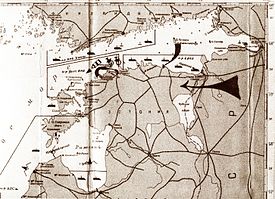
バルト三国に対してあり得る軍事行動のため配置された赤軍部隊には43万5千人の兵員、約8千の大砲と迫撃砲、3千台以上の戦車、500台以上の装甲車があった[25]。
1940年6月3日、バルト三国を拠点とする全ての赤軍はアレクサンドル・ロクティオノフ (Aleksandr Loktionov) の指揮下に統合されていた[26]。
6月9日、命令02622ss/ovがセミョーン・チモシェンコにより赤軍のレニングラード軍管区に出され、6月12日までに準備されることとして次のことが求められた。a) エストニア、ラトビアおよびリトアニア海軍の船舶の基地と海上のいずれかあるいは両方における捕捉、b) エストニアとラトビアの商船艦隊と他の船舶の捕捉、c) タリンとパルティスキへの侵攻と上陸に対する準備、d) リガ湾閉鎖とフィンランド湾とバルト海のエストニアとラトビアの沿岸の封鎖、e) エストニアとラトビアの政府、軍隊および資産の避難の阻止、f) ラクヴェレへの侵攻に対する海軍による支援の手配、g) エストニアとラトビアの航空機のフィンランドあるいはスウェーデンへの飛行の阻止[27]
1940年6月12日、エストニアの完全な軍事封鎖の命令がソビエトのバルチック艦隊に出される(海軍部ロシア国立公文書館の責任者である歴史学者パーヴェル・ペトロフ (Pavel Petrov) 博士による文書記録の参照より[28][29])。
6月13日午前10時40分、赤軍が決められた位置に移動を開始、6月14日午後10時までに終了している。
a) 4隻の潜水艦と海軍の何隻かの小型艦艇がバルト海で所定の位置に着いた。
b) 駆逐艦隊3を含む小艦隊が侵攻を支援する為ナイッサール島の西に位置した。
c) 第一海兵旅団の4大隊が乗船した輸送船「シビル」 (Sibir)、「第二ピャティレトカ」 (2nd Pjatiletka) および「エルトン」 (Elton) はナイッサール島とアエグナ島への上陸と侵攻のための位置に着いた。
d) 輸送船「ドニエステル」 (Dnester) と駆逐艦「ストロゼヴォイ」 (Storozevoi) と「シルノイ」 (Silnoi) は首都タリン侵攻のため数個の部隊を乗艦させて位置に着いた。
e) 第50大隊はクンダ (Kunda) 近くに侵攻するための艦艇の中に位置した。海軍封鎖には全部でソビエト船舶が120隻参加している。それには1隻の巡洋艦、7隻の駆逐艦、17隻の潜水艦が含まれていた。参加した航空機は219機であり、これにはイリユーシンDB-3 (DB-3) 型とツポレフSB型の両爆撃機計84機を持った第8航空旅団と62機の航空機を持った第10旅団が含まれていた[30]。
1940年6月14日、世界の注目がナチス・ドイツによるパリ陥落に集中している間にソビエトによるエストニアの軍事封鎖が実施された。タリン、リガ、ヘルシンキに置かれたアメリカ公使館からの3つの外交文書の包みを運んでいたタリン発ヘルシンキ行のフィンランド旅客機「カレヴァ (Kaleva)」は2機のソ連爆撃機に撃墜されている。アメリカの外務部事務員ヘンリー・W・アンタイル・ジュニア (Henry W. Antheil, Jr.) はその墜落によって死亡した[31]。
6月15日、赤軍はリトアニアに侵攻し[32]、マスレンキ (Masļenki) でラトビア国境守備隊を攻撃する[33][34]。
1940年6月16日、赤軍は相互援助条約に基づきエストニアとラトビアに進駐を開始。両国内の自由通過権と新政府組織の設立を要求[32][35]。進駐時に出版されたタイム誌の記事によると、ほんの数日の間に約50万人の赤軍部隊がバルト三国を占領し、それはナチス・ドイツにフランスが降伏するちょうど1週間前のことである[36]。
モロトフはバルト三国のソ連に対する陰謀を非難し、ソビエトが承認する政府の設立を求める最後通告をバルト三国に渡した。侵攻をにおわせ、さらに三国がソ連に対する陰謀を企てることで、もともとの条約に違反したとして告発し、モスクワは最後通告を出している。それはバルト諸国に新しい譲歩を求め、その中には各政府の交代と三国に軍隊がいくらでも入ることを認めさせることが含まれていた[2][37][38][39]。数十万の赤軍が国境を越えてエストニア、ラトビア、リトアニアに入った[40]。この追加された赤軍は各国の軍隊よりかなり多かった[41]。
国際的に孤立し、圧倒的な赤軍が国境と国内の両方にいる状態の中で、バルト三国の政府は積極的な抵抗を行わず、勝ち目のない戦争における流血を避けることが彼らの利益であると決定する[42]。バルト三国の占領は赤軍の支援を得た共産主義者によって各国に起こされたクーデターによって達成された[43]。
エストニア国防軍とエストニア防衛連盟の大部分は抵抗が無益であると信じるエストニア政府の命令に従い降伏し、赤軍に武装解除された[44][45]。1940年6月21日、タリンのラウア (Raua) 通りに駐屯していたエストニア通信大隊のみが赤軍および「人民の自衛」と呼ばれる共産民兵[46]に抵抗を示している[47]。赤軍が6台の装甲戦闘車両を含めた増援をつぎ込み、闘いは日没までの数時間続いた。結局軍事的抵抗は交渉で終了し、通信大隊は降伏し、武装解除される[48]。エストニア軍人アレクセイ・ミャンニクス (Aleksei Männikus) とヨハンネス・マンドレ (Johannes Mandre) の2人が死亡、エストニア側の負傷者は数人、ソビエト側では約10名が死亡し、それ以上の負傷者が出ている[49][50]。戦いに参加したソビエト民兵は、ニコライ・ステプロフ (Nikolai Stepulov) に率いられていた[51]。
ソビエトの恐怖
ソビエトは圧制に加えて大規模な国外追放を実施した。イワン・セーロフ将軍が署名した「エストニア、ラトビアおよびリトアニアから反ソビエト分子をロシアに追放する手続き」(セーロフ文書) はバルト三国の人々の国外追放を監督するための手順と規約の詳細な説明を含んでいる。
赤軍による制圧直後から、地元の共産主義支援者およびロシアから入った者達の指導で、三国全ての大統領と政府の辞任が強制され、彼らのかわりに完全に共産主義者からなる「人民の政府」に変えられた。これらの作業を監督・指導するため、スターリンの側近のうち、アンドレイ・ジダーノフがエストニアへ、アンドレイ・ヴィシンスキーがラトビアへ、ウラジーミル・デカノゾフがリトアニアへそれぞれ派遣された[52]。
翌7月にはソ連に忠実な地元の共産主義者によって仕組まれた議会選挙を実施。共産主義者と彼らの同盟者のみ参加が認められた[53]。選挙結果は完全な捏造で、ソビエト報道部は投票の終了する24時間以上前にロンドン紙にその結果を付けて選挙を取り上げている[54][55]。選挙の結果、バルト三国全ての議会で共産主義者が多数派となり、全く寝耳に水の話に対する人々の抗議を押し切って[53]、8月には彼ら全員でソ連への併合を求める動議を提出した。いずれの国でもその動議が可決される。ソ連は予定通り三つの嘆願書全部を「受け入れ」、正式にバルト三国を併合する。
共産党に投票してパスポートに検印を押してもらうことが出来なかった人々は、後頭部を撃たれた[56]。公共の裁判所も、「人民に対する反逆者」、つまり「政治的義務」であった彼らの国をソ連に入れる投票ができなかった人々を罰するために設立された。
選挙直後、イワン・セーロフ指揮下のNKVD部隊は1万5千人以上の「敵対的分子」とかれらの家族を逮捕している[41]。ソビエト占領の最初の年、つまり1940年6月から1941年6月までの間における確認された処刑、徴兵あるいは国外追放された数は少なくとも12万4千467人と推定され、内訳はエストニアで5万9千732人、ラトビアで3万4千250人、リトアニアで3万485人である[57]。これにはエストニアの8人の前国家元首と38人の大臣、ラトビアの3人の前国家元首と15人の大臣、リトアニアの大統領、5人の首相と24人の他の大臣が含まれる[58]。最後の大規模な作業が1941年6月27日から28日の夜に予定されていた。それは1941年6月22日、ドイツがソ連に侵攻したバルバロッサ作戦が行われた時に戦後まで延期される[41]。歴史家ロバート・コンクエストによれば、バルト三国からの選択されての国外追放は、「カティンの森事件の動機として後には明らかだったように」、政治的および社会的エリートを除くことによる国の「指導層の除去」という政策の典型である[59]。
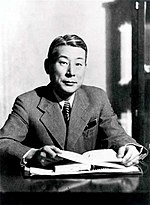
この時期、リトアニアのカウナスには日本領事館領事代理として杉原千畝が駐在していた。ソ連からはリトアニア併合に伴う日本領事館の閉鎖通告が伝えられ、杉原はソ連政府と日本政府からの再三の退去命令を受けながらも、ドイツのユダヤ人に対する迫害政策から逃れようとしてドイツ占領下のポーランドからリトアニアに逃亡してきた多くのユダヤ人に対し、1940年7月から彼自身がリトアニアを離れる同年9月にかけて大量のビザを発給している。(参照:杉原千畝#「命のビザ」)
1940年の7月から8月、エストニア、ラトビア、リトアニアの使節は、アメリカとイギリスに対し、ソビエトによる彼らの国々の占領と併合について正式に抗議を行った。アメリカは[60]スチムソン・ドクトリンの原則に沿い(サムナー・ウェルズの1940年7月23日の宣言[55][61])、他のほとんどの西側諸国と同様[62]、併合を決して正式に承認しなかったが、ソビエトの統治に直接的な干渉を行わなかった。バルト三国は国際法に基づいて法的(デ・ジュリ)に存在を続けた[63][64]。バルト三国の外交および領事の代表は1940年から1991年の間いくつかの西欧諸国(アメリカ、オーストラリア、スイス)でその役目を果している[65]。 バルト三国が独立を回復するまでの1940年から1991年までの期間、西欧諸国においてエストニア、ラトビア、リトアニアの外交担当者は、それぞれの国の正式な意見をまとめ、発表することを継続し、各国の利権と各国の市民を保護した。
バルト三国の事件は単独のものではなかった。独ソ両国はフィンランドとスカンディナヴィア半島にその中立あるいは主権を侵害する居留地を要求した。ドイツはノルウェーでの戦闘中、スウェーデンに圧力をかけてノルウェーと南スウェーデンの港との間で物資と人を輸送する権利を認めさせようとし、これはノルウェーの敗退後に達成される。その直後、ソ連はフィンランドに圧力をかけハンコ海軍基地とソ連国境間の輸送の権利を要求し始め、ペツァモ(Petsamo、現ロシア領ペチェングスキー地区)のニッケル鉱山の支配権とともにモスクワ平和条約の中のフィンランドの譲歩として達成された。
8月、フィンランドは1930年代半ばからのイデオロギーの違いに起因してナチス・ドイツとは冷めた関係だったが、ソ連との冬戦争によってナチス・ドイツ側とはっきり示され、ドイツとの関係を発展させる外交努力の中でドイツ軍の部隊に北ノルウェーとボスニア湾の港との往来の権利を認めた。フィンランドはソビエト占領に対抗する唯一の望みに見られるようになったドイツとの政治的な接触を続けている。9月、フィンランドとソ連は、ハンコを経由地として使用することについて合意した。1940年11月、ソビエト外務人民委員(ヴャチェスラフ・モロトフ)はフィンランド侵略のためドイツに承認と消極的支援を求めが、ヒトラーはフィンランドは近づくソ連への侵攻における潜在的な同盟国と見ていたため断っている。間接的なドイツの支援がフィンランドに交渉の終了を許すまではペツァモ鉱山についての交渉は数カ月の間進展がなかった。
- ^ Country Profiles: Estonia, Latvia, Lithuania at UK Foreign Office
- ^ a b The World Book Encyclopedia ISBN 0716601036
- ^ The History of the Baltic States by Kevin O'Connor ISBN 0313323550
- ^ Saburova, Irina (1955). “The Soviet Occupation of the Baltic States”. en:Russian Review 14 (1): 36–49. doi:10.2307/126075.
- ^ See, for instance, position expressed by European Parliament, which condemned "the fact that the occupation of these formerly independent and neutral States by the Soviet Union occurred in 1940 following the Molotov/Ribbentrop pact, and continues." European Parliament (1983-01-13). “Resolution on the situation in Estonia, Latvia, Lithuania”. Official Journal of the European Communities C 42/78.
- ^ "After the German occupation in 1941-44, Estonia remained occupied by the Soviet Union until the restoration of its independence in 1991." [1](European Court of Human Rights 17 January 2006)
- ^ The Soviet occupation and incorporation at Encyclopædia Britannica
- ^ http://www.britannica.com/eb/article-37264/Baltic-states Baltic states, WWII losses] at Encyclopædia Britannica
- ^ a b c The Forty-Third Session of the UN Sub-Commission at Google Scholar
- ^ Baltic Military District globalsecurity.org
- ^ (英語) Latvia takes over the territory of the Skrunda Radar Station
- ^ (英語) Russia Pulls Last Troops Out of Baltics ザ・モスクワ・タイムズ.
- ^ Baltic League, タイム (雑誌), June 02, 1924
- ^ No Philosophical Abstractions, タイム (雑誌), April 16, 1934
- ^ a b c 独ソ不可侵条約秘密議定書
- ^ ドイツ・ソビエト境界友好条約秘密条項
- ^ Christie, Kenneth, Historical Injustice and Democratic Transition in Eastern Asia and Northern Europe: Ghosts at the Table of Democracy, RoutledgeCurzon, 2002, ISBN 0700715991
- ^ Moscow's Week at タイム (雑誌) on Monday, Oct. 09, 1939
- ^ a b The Baltic States: Estonia, Latvia and Lithuania by David J. Smith, Page 24, ISBN 0415285801
- ^ Tannberg. Tarvel. Documents on the Soviet Military Occupation of Estonia, Trames, 2006.
- ^ Maltjukhov, Mikhail. The missed opportunity of Stalin. The Soviet Union and the fight for Europe: 1939-1941 (documents, facts, judgements). 2002, Moscow.
- ^ Baltic states :: Soviet occupation - Britannica Online Encyclopedia
- ^ Minus a Member at Time magazine on Monday, Dec. 25, 1939
- ^ Suursaari、Tytärsaari、LavansaariおよびSeiskariの島々
- ^ Mikhail Meltyukhov Stalin's Missed Chance p. 198, available at [2]
- ^ Pavel Petrov, p. 153
- ^ Pavel Petrov, p. 154
- ^ (フィンランド語) Pavel Petrov at Finnish Defence Forces home page
- ^ (ロシア語) documents published from the State Archive of the Russian Navy
- ^ Pavel Petrov, p. 164
- ^ The Last Flight from Tallinn Archived 2009年3月25日, at the Wayback Machine. at American Foreign Service Association
- ^ a b Five Years of Dates at Time magazine on Monday, Jun. 24, 1940
- ^ a b The Occupation of Latvia Archived 2007年11月23日, at the Wayback Machine. at Ministry of Foreign Affairs of the Republic of Latvia
- ^ "Tragedy of Maslenki - Latvia's Tragedy, June 15, 1940" Archived 2007年5月6日, at the Wayback Machine.
- ^ 赤軍がエストニア、ラトビアに進駐(東京朝日新聞)昭和15年6月18日夕刊 『昭和ニュース辞典第7巻 昭和14年-昭和16年』p384 昭和ニュース事典編纂委員会 毎日コミュニケーションズ刊 1994年
- ^ Germany Over All, タイム (雑誌), June 24, 1940
- ^ For Lithuania see, for instance, Thomas Remeikis (1975). “The decision of the Lithuanian government to accept the Soviet ultimatum of June 14, 1940”. LITUANUS, Lithuanian Quarterly journal of Arts and Sciences 21 (No.4 - Winter 1975) 2007年3月3日閲覧。.
- ^ see report of Latvian Chargé d'affaires, Fricis Kociņš, regarding the talks with Soviet Foreign Commissar Molotov in I.Grava-Kreituse, I.Feldmanis, J.Goldmanis, A.Stranga. (1995) (latvian). Latvijas okupācija un aneksija 1939-1940: Dokumenti un materiāli. (The Occupation and Annexation of Latvia: 1939-1940. Documents and Materials.). pp. 348–350
- ^ for Estonia see, for instance, Tanel Kerikmäe, Hannes Vallikivi (2000). “State Continuity in the Light of Estonian Treaties Concluded before World War II”. Juridica International (I 2000): 30–39 2007年3月3日閲覧。.
- ^ nearly 650,000 according to Kenneth Christie, Robert Cribb (2002). Historical Injustice and Democratic Transition in Eastern Asia and Northern Europe: Ghosts at the Table of Democracy. RoutledgeCurzon. pp. 83. ISBN 0700715991
- ^ a b c d e en:Stephane Courtois; Werth, Nicolas; Panne, Jean-Louis; Paczkowski, Andrzej; Bartosek, Karel; Margolin, Jean-Louis & Kramer, Mark (1999). The en:Black Book of Communism: Crimes, Terror, Repression. en:Harvard University Press. ISBN 0-674-07608-7.
- ^ The Baltic States: Estonia, Latvia and Lithuania p.19 ISBN 0415285801
- ^ Estonia: Identity and Independence by Jean-Jacques Subrenat, David Cousins, Alexander Harding, Richard C. Waterhouse ISBN 9042008903
- ^ June 14 the Estonian government surrendered without offering any military resistance; The occupation authorities began...by disarming the Estonian Army and removing the higher military comman from power Ertl, Alan (2008). Toward an Understanding of Europe. Universal-Publishers. p. 394. ISBN 1599429837
- ^ the Estonian armed forces were disarmed by the Soviet occupation in June 1940 Miljan, Toivo (2004). Historical Dictionary of Estonia. Scarecrow Press. p. 111. ISBN 0810849046
- ^ Baltic States: A Study of Their Origin and National Development, Their Seizure and Incorporation Into the U.S.S.R. W. S. Hein. p. 280
- ^ “The President of the Republic acquainted himself with the Estonian Defence Forces”. Press Service of the Office of the President (2001年12月19日). 2009年8月21日時点のオリジナルよりアーカイブ。2009年1月2日閲覧。
- ^ (エストニア語)51 years from the Raua Street Battle at Estonian Defence Forces Home Page
- ^ 784 AE. “Riigikogu avaldus kommunistliku režiimi kuritegudest Eestis” (Estonian). en:Riigikogu. 2007年6月21日時点のオリジナルよりアーカイブ。2009年1月2日閲覧。
- ^ Lohmus, Alo (2007年11月10日). “Kaitseväelastest said kurja saatuse sunnil korpusepoisid” (Estonian). オリジナルの2009年8月21日時点におけるアーカイブ。 2009年1月2日閲覧。
- ^ “Põlva maakonna 2005.a. lahtised meistrivõistlused mälumängus” (Estonian). kilb.ee (2005年2月22日). 2008年6月15日時点のオリジナルよりアーカイブ。2009年1月2日閲覧。
- ^ in addition to the envoys accredited in Baltic countries, Soviet government sent the following special emissaries: to Lithuania: Deputy Commissar of Foreign Affairs Dekanozov; to Latvia: Vishinski, the representative of the Council of Ministers; to Estonia: Regional Party Leader of Leningrad Zhdanov. “Analytical list of documents, V. Friction in the Baltic States and Balkans, June 4, 1940 – September 21, 1940” (html). Telegram of German Ambassador in the Soviet Union (Schulenburg) to the German Foreign Office. 2007年3月3日閲覧。
- ^ a b Attitudes of the Major Soviet Nationalities, Center for International Studies, en:Massachusetts Institute of Technology, 1973
- ^ Mangulis, Visvaldis (1983). “VIII. September 1939 to June 1941”. Latvia in the Wars of the 20th century. Princeton Junction: Cognition Books. ISBN 0912881003
- ^ a b Švābe, Arvīds. The Story of Latvia. Latvian National Foundation. Stockholm. 1949.
- ^ Justice in The Baltic at Time magazine on Monday, Aug. 19, 1940
- ^ Dunsdorfs, Edgars. The Baltic Dilemma. Speller & Sons, New York. 1975
- ^ Küng, Andres. Communism and Crimes against Humanity in the Baltic States. 1999 “アーカイブされたコピー”. 2001年3月1日時点のオリジナルよりアーカイブ。2016年1月21日閲覧。
- ^ The Harvest of Sorrow: Soviet Collectivization and the Terror-Famine (1986)
- ^ see, for instance, “Concurrent Resolution of the House and Senate: H. CON. RES. 128” (PDF) (2005年7月25日). 2006年12月9日閲覧。 “[e]xpressing the sense of Congress that the Government of the Russian Federation should issue a clear and unambiguous statement of admission and condemnation of the illegal occupation and annexation by the Soviet Union from 1940 to 1991 of the Baltic countries of Estonia, Latvia, and Lithuania.”
- ^ Then acting U.S. Secretary of State, Sumner Wells described Soviet activities in the Baltic states as: "the devious process whereunder the political independence and territorial integrity of the three small Baltic republics - Estonia, Latvia and Lithuania - were to be deliberately annihilated by one of their more powerful neighbors."
- ^ European Parliament (1983-01-13). “Resolution on the situation in Estonia, Latvia, Lithuania”. Official Journal of the European Communities C 42/78. "whereas the Soviet annexations of the three Baltic States still has not been formally recognized by most European States and the USA, Canada, the United Kingdom, Australia and the Vatican still adhere to the concept of the Baltic States".
- ^ Van Elsuwege, P. (2003). “State Continuity and its Consequences: The Case of the Baltic States”. Leiden Journal of International Law 16: 377–388. doi:10.1017/S0922156503001195.
- ^ Malksoo, Lauri (2005). “Illegal Annexation and State Continuity: The Case of the Incorporation of the Baltic States by the USSR”. The American Journal of International Law 99 (3): 734–736. doi:10.2307/1602324.
- ^ Juda, Lawrence (1975). “United States' nonrecognition of the Soviet Union's annexation of the Baltic States: Politics and law”. en:Journal of Baltic Studies 6 (4): 272–290.
- ^ Baltic states German occupation at Encyclopædia Britannica
- ^ The Baltic States: The National Self-Determination of Estonia, Latvia and Lithuania by Graham Smith, p. 91. ISBN 0312161921
- ^ Resistance! Occupied Europe and Its Defiance of Hitler by Dave Lande, p. 200. ISBN 0760307458
- ^ Mart Laar (2006) (Estonian). Sinimäed 1944: II maailmasõja lahingud Kirde-Eestis. Tallinn: Varrak
- ^ By Royal Institute of International Affairs. Information Dept. Published 1945
- ^ Jewish Executions Carried Out by Einsatzgruppe A Franz Walter Stahlecker
- ^ The Holocaust in the Baltics Archived 2008年3月7日, at the Wayback Machine.
- ^ The Virtual Jewish History Tour - Estonia
- ^ Estonian International Commission for Investigation of Crimes Against Humanity
- ^ According to the most recent figures from the Latvian State Archives, 1,771 Latvian Jews were deported by the Soviets in June 1941, out of a total 15,424 deportees. Thus Jews made up 11% of the deportees at a time when their share of the total population of Latvia was only around 5%. See: Pelkaus, Elmārs (ed.) (2001) (Latvian, English, and Russian). Aizvestie: 1941. gada 14. jūnijā. Rīga: Latvijas Valsts arhīvs; Nordik. ISBN 9984675556
- ^ a b en:Andrew Ezergailis, The Holocaust in Latvia, 1996
- ^ http://motlc.learningcenter.wiesenthal.org/text/x14/xm1411.html
- ^ Nuremberg Document L-180, relevant excerpts from www.nizkor.org
- ^ Einsatzgruppen Archives.
- ^ Cf the Jäger Report of 1 December 1941
- ^ Dieckmann, Christoph; Toleikis, Vytautas; and Zizas, Rimantas (2005) (Lithuanian and English). Karo belaisvių ir civilių gyventojų žudynės Lietuvoje, 1941–1944 = Murders of Prisoners of War and of Civilian Population in Lithuania, 1941–1944. Totalitarinių režimų nusikaltimai Lietuvoje 2. Vilnius: Margi Raštai. ISBN 9986092973
- ^ Šarūnas Liekis. A State within a State? Jewish autonomy in Lithuania 1918–1925. Versus aureus, 2003
- ^ Šarūnas Liekis. Žydai: "kaimynai" ar "svetimieji"? Etninių mažumų problematika
- ^ Reflections on the Holocaust in Lithuania: A New Book by Alfonsas Eidintas - Senn
- ^ Д. Муриев, Описание подготовки и проведения балтийской операции 1944 года, Военно-исторический журнал, сентябрь 1984. Translation available, D. Muriyev, Preparations, Conduct of 1944 Baltic Operation Described, Military History Journal (USSR Report, Military affairs), 1984-9, pp. 22-28
- ^ a b Background Note: Latvia at US Department of State
- ^ a b c d e f g h i j Talmon, Stefan (2001). Recognition of Governments in International Law. Oxford University Press. pp. 103. ISBN 9780198265733
- ^ Aust, Anthony (2005). Handbook of International Law. Cambridge University Press,. pp. 26. ISBN 0521823498
- ^ Diplomats Without a Country: Baltic Diplomacy, International Law, and the Cold War by James T. McHugh , James S. Pacy, Page 2. ISBN 0313318786
- ^ Hiden, John; Vahur Made, David J. Smith (2008). The Baltic Question During the Cold War. Routledge. pp. 120. ISBN 9780415371001
- ^ "The Government of Canada recognizes that Estonia has de facto entered the Union of Soviet Socialist Republics but has not recognised this de jure. The Government of Canada recognizes the Government of the Estonian Soviet Socialist Republic to be the de facto government of Estonia but does not recognize it as the de jure government of Estonia."Stefan Talmon, Recognition of Governments in International Law: With Particular Reference to Governments in Exile. Oxford: Clarendon Press, 1998, p104
- ^ Lawrence Juda, United States' nonrecognition of the Soviet Union's annexation of the Baltic States: Politics and law, Journal of Baltic Studies, Volume 6, Issue 4 Winter 1975 , pages 272 - 290
- ^ Nordic Contacts 1991-1998 retrieved January 25, 2008
- ^ Sweden to repay two nations gold deposits, American Metal Market, July 2, 1992
- ^ a b U.S.-Baltic Relations: Celebrating 85 Years of Friendship at state.gov
- ^ The Baltic States: Estonia, Latvia and Lithuania By David J. Smith; Page 138
- ^ Harriman, Averel & Abel, Elie. Special Envoy to Churchill and Stalin 1941-1946, Random House, New York. 1974. p. 1135.
- ^ Gannon, Robert. The Cardinal Spellman Story. Doubleday, New York. 1962. pp. 222-223
- ^ Minutes of meeting, Bohlen, recording. Foreign Relations of the United States, The Conferences of Cairo and Teheran, 1943, pp. 594-596
- ^ Bullitt, Orville. For the President: Personal and Secret. Houghton-Mifflin, Boston. 1972. p. 601.
- ^ Churchill, Winston. The Second World War (6 volumes). Houghton-Mifflin, Boston. 1953. v. 6. pp. 227-228.
- ^ Union of Soviet Socialist Republics :: Foreign policy - Britannica Online Encyclopedia
- ^ Interview with Gerald Ford, August 4, 1997—"You have to recognize that the terms of that agreement said those boundaries have to be maintained peacefully. In other words, the Helsinki accords ruled out military action to change those borders. Now as long as those borders were re-defined peacefully, that was okay under the Helsinki Accords. Well what happened when you had the human rights provisions, and the dissidents rose up against their dictators, they changed those borders the Baltic nations and even Poland, Czechoslovakia and Hungary, they took advantage of the human rights provision, to re-define what the borders meant."
- ^ Collier's Yearbook, 1975
- ^ en:European Court of Human Rights cases on Occupation of Baltic States
- ^ Motion for a resolution on the Situation in Estonia by EU
- ^ Estonia says Soviet occupation justifies it staying away from Moscow celebrations - Pravda.Ru Archived 2005年7月28日, at the Wayback Machine.
- ^ Žalimas, Dainius. LEGAL AND POLITICAL ISSUES ON THE CONTINUITY OF THE REPUBLIC OF LITHUANIA. Retrieved January 24, 2008.
- ^ Russia denies Baltic 'occupation' by BBC News
- ^ Bush denounces Soviet domination by BBC News
- ^ Russia denies Archived 2007年12月15日, at the Wayback Machine. at newsfromrussia
- ^ the term "occupation" inapplicable Archived 2007年9月29日, at the Wayback Machine. at newsfromrussia
- ^ A Do-Over for Russian History? at the Wall Street Journal.
- ^ (ロシア語)1939 USSR-Latvia Mutual Aid Pact (full text)
- ^ en:Great Soviet Encyclopedia
- ^ http://web.ku.edu/~eceurope/communistnationssince1917/ch2.html at University of Kansas, retrieved January 23, 2008
- ^ League of Nations Treaty Series, Vol. XI, pp. 29-71.
- ^ Receuil de traités conclus par la Lithuanie avec les pays étrangérs, Vol. I, Kaunas, 1930, pp. 30-45.
- ^ League of Nations Treaty Series, 1920-21, No. 67, pp. 213-231.
- ^ the Peace Treaty with Estonia and Latvia, para. 2., Peace Treaty with Lithuania, para. 1.
- ^ Prof. Dr. G. von Rauch "Die Baltischen Staaten und Sowjetrussland 1919-1939", Europa Archiv No. 17 (1954), p. 6865.
- ^ Receuil des traités conclus par la Lithuanie avec les pays étrangés, Vol. I, Kaunas, 1930, pp. 429-435.
- ^ League of Nations Treaty Series, 1934, No. 3408, pp. 123-125 and 127
- ^ League of Nations Treaty Series, Vol. CXXXI, pp. 297-307.
- ^ Arts. I and IV of the Non-Aggression Treaties with Latvia and Estonia, and Arts. III and V of the Non-Aggression Treaty with Lithuania.
- ^ League of Nations Treaty Series, 1929, No. 2028.
- ^ League of Nations Treaty Series, 1928, No. 2137.
- ^ Kellogg-Briand Pact at Yale University
- ^ Aggression Defined at Time Magazine the Convention for the Definition of Aggression.
- ^ League of Nations Treaty Series, 1934, No. 3391.
- ^ League of Nations Treaties Series No. 4656/39, pp. 385-387.
- ^ B. Meissner, Die Sowjetunion, die Baltischen Staaten und das Volkerrecht, 1956, pp. 119-120.
- ^ Louis L. Snyder, Fifty Major Documents of the Twentieth Century, 1955, p. 92.
- ^ Embassy of the U.S.S.R., Soviet War Documents (Washington, D.C.: 1943), p. 17 as quoted in Karski, Jan. The Great Powers and Poland, 1919-1945, 1985, on 418
- ^ Foreign Relations of the United States, The Conference at Malta and Yalta, Washington, 1955, p. 977.
- ^ Frank McDonough. Neville Chamberlain, Appeasement and the British Road to War, pg. 86
- ^ Scott, George (1973). The Rise and Fall of the League of Nations. London: Hutchinson & Co LTD. pp. 312, 398 ISBN 0-09-117040-0.
- ^ パッツの死去は1974年にソ連から国際赤十字に伝えられた。
- ^ Michael L. Dockrill, B. J. C. McKercher, Diplomacy and World Power: Studies in British Foreign Policy, 1890-1950, Cambridge University Press 1996, p226
- バルト諸国占領のページへのリンク